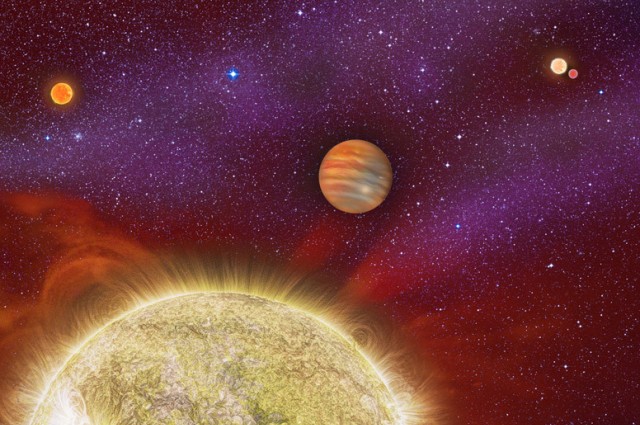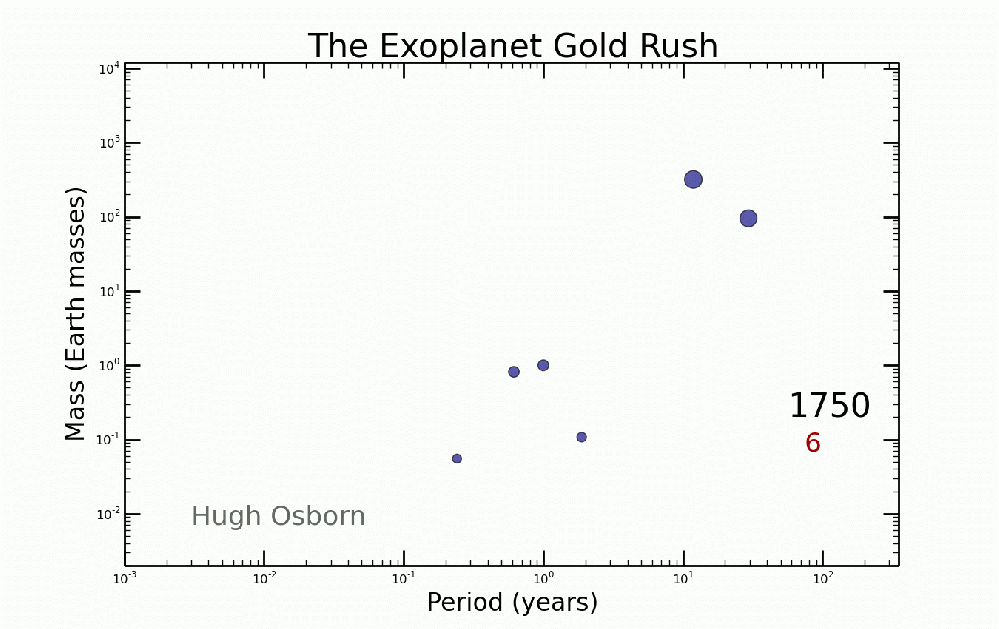Planet Discovered with Four Parent Stars
Binary star systems, like the one featured in the Tatooine system of Star Wars are common in the universe with half of all systems being comprised that way. Ternary system, or systems with three stars, are more rare, and even more rare are quaternion systems.
Planets within these four star systems are also rare, so much so that we have only just now found the second such a planet in the last few weeks. The planet, dubbed 30 Ari, is a “hot Jupiter” that lies exceptionally close to its primary star, orbiting once every three days. However, the planet’s primary star is thought to have had little to do with its creation; it is much more likely that it was thrown into its current orbit from gravitational interactions with the other three much larger, more distant stars.
The article does not go into the composition of the planet, but though they describe it as a “hot Jupiter,” I doubt that it has a composition close to that of Jupiter. Jupiter is full of ices that wouldn’t be able to form. Perhaps it was once a gas giant, but unless it’s magnetic field protects it, my guess is that the gases have been stripped off of it.

